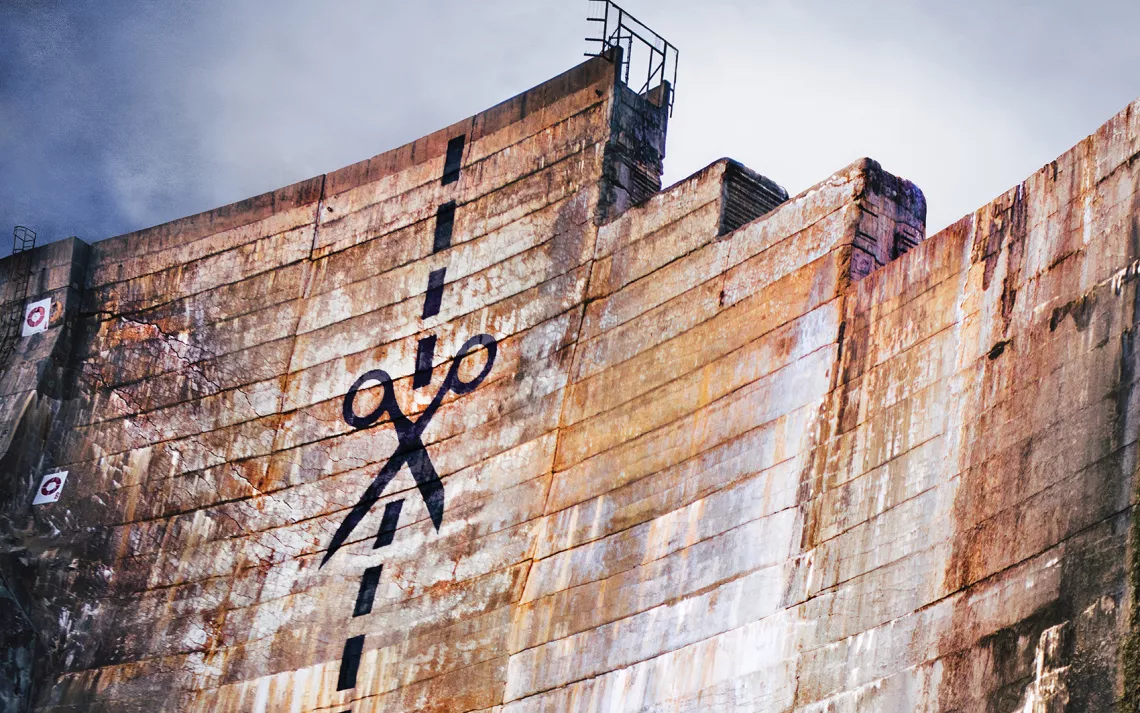3 Dam Detonation Videos that Prove Going Green is Blowing Up

Photo courtesy of DamNation
2014 was a monumental year for dam removal projects. A record-setting 72 dams were removed across 19 states, restoring hundreds of miles of river, and last year’s Patagonia-produced film DamNation raised even more awareness about the environmental impact of defunct dams that block salmon and other fish from their upriver breeding grounds.
While the best reasons to do away with old dams are certainly the ecological ones, it doesn’t hurt that the massive detonations involved are pretty dam fun to watch.
Condit Dam, White Salmon River, Washington
The be-all, end-all of dam demolition videos. Condit Dam on the White Salmon River in Washington was almost a century old when it was breached by explosives in 2011 and removed over the following year. The massive explosive breach, and the roaring torrent of mud and water that rushed through behind it, was captured from multiple angles in stunning high definition by a National Geographic film crew. (Despite reasonable concerns about the effect of the demolition and resultant concrete and sediment, a report on the prior removal of the Glines Canyon Dam—video below—found no negative effects on the fish population as a result of the run-off.)
The story behind the dam’s removal is also compelling. Because it blocked fish from migrating upriver, the company that owned the dam, PacifiCorp, was forced to either install a $100 million salmon ladder or remove the dam at a comparatively modest cost of $35 million, according to the Seattle Times. The company chose the latter option. Within a year of the initial breach, steelhead were spotted in the upper river for the first time in almost a century , and today, thanks to a remarkable revegetation effort, the river has nearly returned to its natural state.
Glines Canyon Dam, Elwha River, Washington
The world’s largest dam removal project. The Pacific Northwest is leading the way when it comes to removing large dams, not unrelated to the fact that it has so many of them (1141 for those counting). The 210-foot-tall Glines Canyon Dam, built in 1927, blocked the richest Chinook and red salmon run in northwest Washington until its removal in 2014, severely impacting the traditional resources and livelihood of the Lower Elwha Klallam Tribe.
The dam was removed layer by layer over six months, predominantly by excavator, as depicted in this beautiful time lapse composite. Finally, the base was removed in September 2014 with a series of blasts, the last of which is captured in the above video.
Marmot Dam, Sandy River, Oregon
The Marmot Dam on the Sandy River was removed in 2007, putting an end to its nearly century-long operation. At the time, it was the largest dam to ever be removed—a record that would be broken years later by the Glines Canyon Dam removal. Now the Sandy River flows freely all the way from Mt. Hood to the Pacific Ocean, allowing coho, Chinook, and steelhead access to their historical breeding grounds.
At the time, the Marmot Dam was a test case for other removal projects, as no dam of its size had ever been taken out. Because of concerns about potential ecological impact, the Forest Service conducted a thorough study (previously linked) that happily found that “reservoir sediments were transported downstream on a timetable that surpassed all expectations. This happened with no detrimental effects on fish habitat or increased flooding that might impact downstream properties.” These findings paved the way for the removal of the Glines Canyon and Condit dams.
Can’t get enough?
The explosive removals of many smaller dams have been caught on film, including the White Gulch and Horse Creek dams in California and the City Mill Dam in Georgia. There are also plenty of interesting videos of excavator removals, including this time lapse of an excavator drilling out the Minnesota Falls Dam on the Minnesota River.
Fortunately for fans of free flowing rivers, this is a trend that’s on the upswing. Four dams on the Klammath River are scheduled to be taken out by 2020. That project, when completed, will take up the mantle as the largest river restoration in the U.S. to date.
Follow Sierra on Facebook, Twitter, Pinterest, Instagram, and YouTube.
 The Magazine of The Sierra Club
The Magazine of The Sierra Club



